In a world hard hit by persistent crisis, social injustice and disinformation, journalism is more crucial than ever. However, what happens when journalists don’t have the means to sustain themselves and the media cannot sustain their newsrooms?
Tipping into the basics of Artificial Intelligence: Lessons from Jonathan Soma
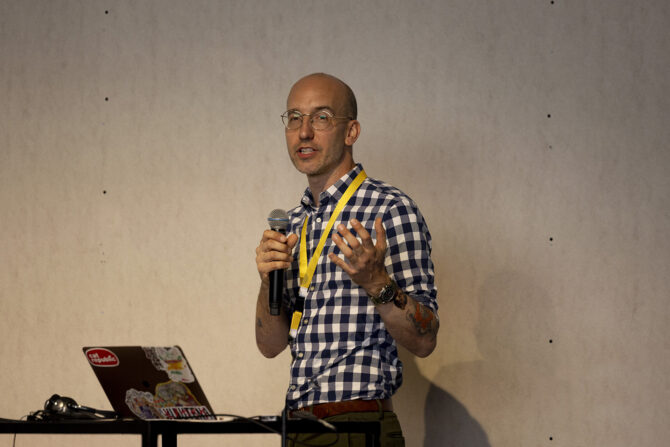
Professor Jonathan Soma provides essential insights into Artificial Intelligence, suitable for both newcomers and seasoned professionals, presenting an optimal entry point for anyone in the tech field.
During the iMEdD International Journalism Forum 2023, various global media organizations and foundations shared their best practices on how they attract or provide funding, while at the same time making a lasting and meaningful impact with their journalistic work. This guide on funding and sustainability in journalism is based on the panels “Funding journalism: A how-to conversation” and “Sustainability models in an era of digital revolution”.
Subscription model
Carine Fouteau, Chief Editor at Mediapart explained in her keynote “Media sustainability models: The Mediapart case” how the French online investigative newspaper managed to be fully independent from advertisers, state subsidies, financial shareholders and GAFAM (Google, Amazon, Facebook, Apple, Microsoft), while relying solely on subscriptions. In order to attract and sustain subscribers, Mediapart constantly tries to improve readers’ experience and enlarge its audience by getting to know them and offering them space to express their opinion, criticism and/ or objections through blog posts and comments. What is more, they prioritize transparency, since the methodology followed in their investigations is published, filling the “black box” of investigative journalism. As a result, Mediapart has gained the trust of its readers, who turn to it in order to be informed about “what they wouldn’t know without them”.
Donations
The Wire, one of India’s most influential non-profit media organizations, relies on donations exclusively from Indian citizens and entities, as mandated by the Indian law. More specifically, programmatic donations and philanthropic support from the country constitute 80% of their income, while advertising plays a minor role. Among other sources of funding are events and a subscription-driven model that has been launched to promote some niche products. It is important to note that The Wire has to face the maintenance of its sustainability in the “repressive environment of India”, as Siddharth Varadarajan, the Founding Editor stressed, which has become the “hotspot” of fake news. He added that the term sustainability does not only refer to the finances of the organization, but also to its outreach to the public.
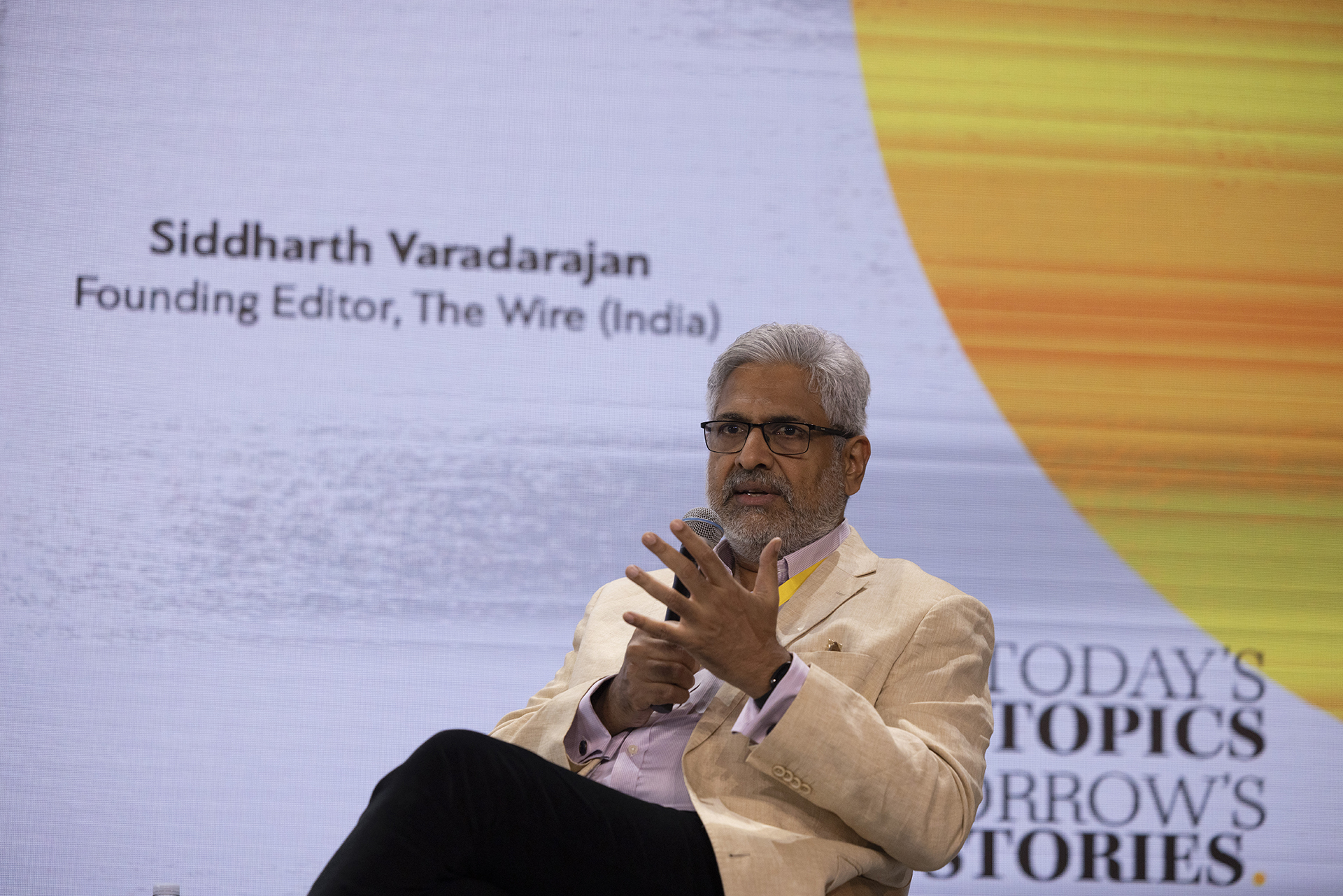
The larger the universe of donors, the smaller the ticket size of each individual donation and finally, the harder it becomes for repression to choke funding.
Siddharth Varadarajan, Founding Editor, The Wire (India). Photo: Alex Grymanis
Migration crisis: collateral damage of the EU’s “development” agenda
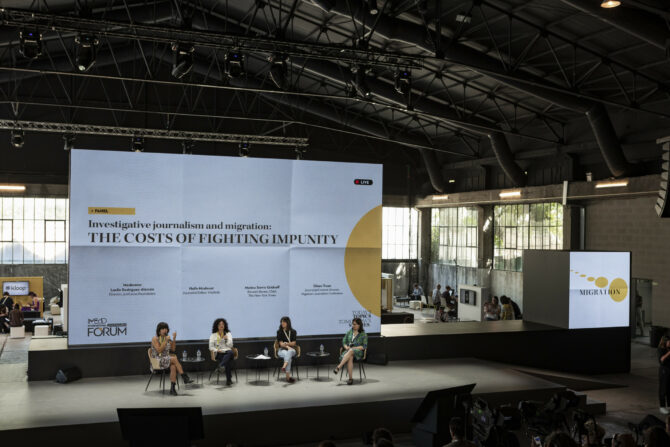
During a one-on-one with Haïfa Mzalouat, Journalist and Editor-in-Chief of the independent, Tunis-based, media group, Inkyfada, iMEdD unravels the bloody business of migration in Tunisia, the EU’s role and the reality of being a migration journalist.
Advertisements? No, thanks.
“Unless you pay for the news, somebody else is going to pay and if that’s an oligarch, he obviously won’t have the best of your interest at heart”, Konstantinos Poulis, Editor-in-Chief in The Press Project stated. The Press Project is an independent media organization based in Greece that gives voice to the stories of the underprivileged that are not welcomed in mainstream media. It relies on regular small donations from a dedicated community of people who support this kind of journalism. After banning all advertisements from banks, big corporations and the state, it has almost eliminated all sources of advertising. Despite the organization’s “painfully slow development”, Poulis is optimistic that The Press Project will continue to thrive in the coming years because it has become an integral part of people’s daily news consumption habits.
Diversification of revenue
Except for the value acquired by its audience, Mediapart diversifies its revenues by turning to Business-to-Business (B2B), donations and partnership as well. What is more, in 2019 its founders transferred all of their shares to a nonprofit endowment, the “Fund for a Free Press”, in order to prevent the takeover of the newspaper. The importance of finding diverse sources of funding is also indicated by Varadarajan’s comment that “The larger the universe of donors, the smaller the ticket size of each individual donation and finally, the harder it becomes for repression to choke funding.” On the other hand, Dromomanos, an independent production company in Latin America, creates journalism and content in order to generate profit, while it has adopted a system of membership, no subscription, as well. What is more, it relies on a circular business model, which consists of four pillars – Editorial (Dromomanos), Consulting (Dromolab), Education (El Salon) and Events (Dromofest)- that feed each other in an effort to diversify income and maintain sustainability. Finally, director Alejandra Inzunza Sánchez pointed out that Dromomanos seeks alliances all over America, since cross-border collaborations are necessary to expand media’s network and attract more funders and global interest. As a result, organizations are not fully dependent on a specific donor.
Partnership with other organizations
Marcia Parker, Vice President of Philanthropic Partnerships at The New York Times explained the ways in which her department develops newsroom initiatives funded by foundations and in partnership with nonprofits. This initiative includes various funding collaborations and programs, as well as training and support to media outlets. As a result, small newsrooms around the states are able to broaden their network and produce high-quality journalism in collaboration with the NYT without worrying about their financial sustainability.
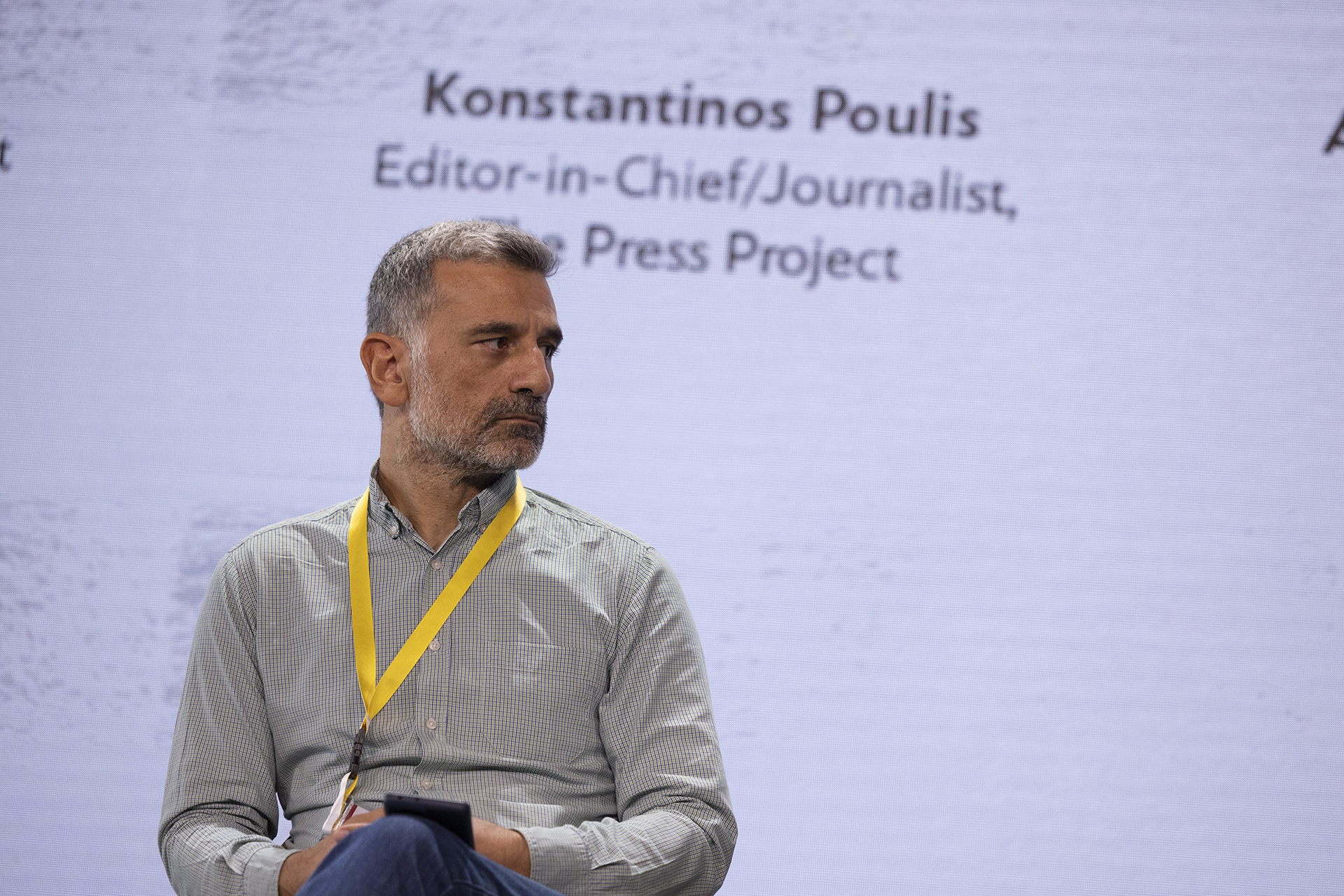
Unless you pay for the news, somebody else is going to pay and if that’s an oligarch, he obviously won’t have the best of your interest at heart.
Konstantinos Poulis, Editor-in-Chief, The Press Project. Photo: Alex Grymanis
Forced disappearances in Mexico: safe journalism, safer lives
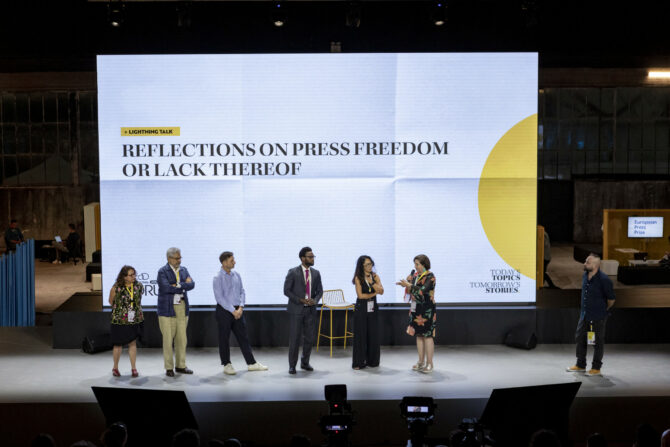
Through an interview with investigative journalist and co-founder of the Quinto Elemento Lab, Marcela Turati, iMEdD digs deeper into the phenomenon of disappearances in Mexico, the inadequate state apparatus and what journalists can do moving forward.
Financial support to thematic reporting
Since media organizations themselves know better how to implement their strategies, funders like OSF Global Program Expression, International Fund for Public Interest Media, and Stichting Democratie en Media do not dictate the kind of journalistic work they are going to fund. This means that they do not give specific directions on how media organizations should spend the money they receive. As a result, they prioritize user-centered and demand-driven grants, adding value to independent critical journalism. Journalists who wish to find funders for their thematic projects (e.g. climate change) should look for and approach funders in that particular space. However, the fear of funders stepping into the field of journalism sometimes turns them to thematic funding, which has a broader impact on society. Abijit Das, Programme Director, Stichting Democratie en Media recommended the establishment of project grants except for core grants to specific organizations in order to achieve balance in the field of media funding.
Financial managers in newsrooms
Since journalists are already burdened with editorial issues, they cannot also be in charge of the financial resources of their organization. This is why financial managers should be hired in every newsroom, since the allocation of tasks is necessary for the organization’s financial growth and independence, as highlighted by Marcia Parker. Of course, the different parts of the organization should collaborate with each other and facilitate peer-reviewing on both editorial and financial issues, making the organization more robust. As Khadija Patel, Chairperson of the International Press Institute and Journalist in Residence at the International Fund for Public Interest Media pointed out, “Media are whole organisms, not just content-producing factories.” When they realize that their nature is much more complex than they originally thought, they will be able to offer solutions to the issue of fundraising.
The need for transparency
Let’s suppose that a news organization receives the longed-for funds and is finally able to produce some high-quality journalism. What happens when the funds run out? How can freelancers and/ or organizations ensure a sustainable future without constantly relying on funders?
Long-term financial sustainability is not an easy task, since journalists do not always know how to sustain themselves and funders do not let them manage their revenues on their own. On top of that, journalists are often swayed by the current trends (like AI), as Susan Valentine, Director of Media Division at the OSF Global Program Expression, stressed, and therefore they adapt their content accordingly, in an effort to meet their funders’ requirements. This strategy poses a risk to independent journalism, which may end up serving the interests of funders. Fickleness in the selection of topics and organizations to be funded makes it urgent to hold funders accountable for their decisions. Besides, philanthropy is based on clear power structures, not on top-down processes, therefore there should be transparency regarding the funding processes.
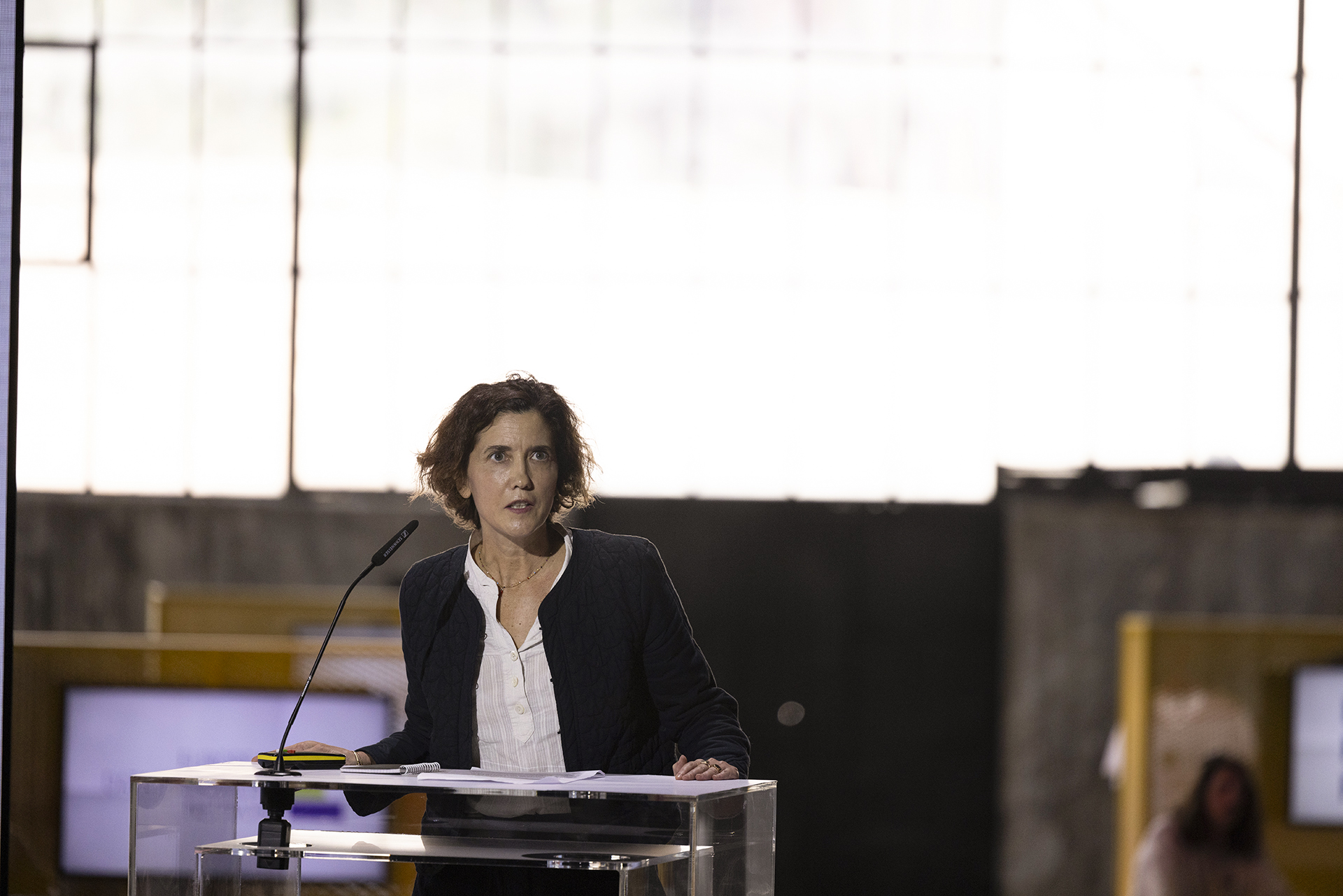
Freedom of the press is not the privilege of journalism, it’s the right of citizens.
Carine Fouteau, Chief Editor, Mediapart. Photo: Alex Grymanis
Navigating burnout: A guide for journalists

AX Mina (Ana), Leadership Trainer and Coach at the The Self Investigation offers her insights into burnout in journalism and some tips on how to tackle it in a culture that requires us to be on 24/7.
The future of media: Where are we heading?
It is imperative that the media rethink the ways in which they reach their audiences and invest in the right ideas, without neglecting the current needs of the whole society. A question they can pose to themselves is “What are people interested in?” and “How do people around the world communicate?”.
Nowadays, a variety of platforms are used for communication and for the exchange of information. For instance, people in South Africa listen exclusively to the radio in order to be informed in their own language, while they use WhatsApp as their primary means of communication and sharing of information. By trying to produce content that stays in these kinds of platforms, media outlets should ensure that they reach a wide audience, including minorities, like immigrants. Disinformation and misinformation should be also dealt with in these environments.
As mentioned by Khadija Patel, new forms of media funding are urgent in a world that cumulatively spends about 0.3% on development assistance to media. Organizations call for a nudge of 1%, which equals to billions of dollars. However, if this goal is unattainable, even a percentage of 0,5% will be enough. This will lead to the advancement of media infrastructure, which even includes the design of their website.
Journalism is indeed a public good that can place democracy at risk unless it is sustained through private and public funds. Otherwise, the news will be dictated by the very few who have the power to control it. Therefore, it is upon us to advocate for equal opportunities through funding high-quality journalism and to protect not only the future of journalism, but also the foundations for a healthy and informed society. After all, Mediapart’s motto is more relevant than ever: “Freedom of the press is not the privilege of journalism, it’s the right of citizens.”